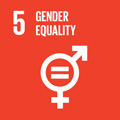- Docente: Daniele Romani
- Credits: 2
- Language: Italian
- Teaching Mode: Traditional lectures
- Campus: Bologna
- Corso: First cycle degree programme (L) in Physiotherapy (cod. 8476)
-
from Oct 04, 2023 to Dec 19, 2023
Learning outcomes
At the end of the module the student has the knowledge and understanding of the general principles of manual therapy. He develops the ability to perform a thorough assessment, to design a treatment and to perform the necessary manual therapy techniques.
Course contents
In consideration of the types of activities and teaching methods adopted, the frequency of this training activity requires all students to carry out specific training modules on safety and health in the study / work placements provided both electronically and in person.
Introduction to the principles of manual therapy
Role of manual therapy in rehabilitation
Pain and its mechanisms
Clinical Reasoning and the general principles of Evaluation
Hypothesis categories
Principles of Evaluation
Degrees of Movement
Movement Diagram
Treatment Procedure
Recording of indicators
Differentiation test
Screening Test (exclusion test)
Body chart
Evaluation and treatment of the main areas of the spine, upper limb, lower limb and neurodynamics.
Readings/Bibliography
Banks K, Hengeveld E. Manipolazioni periferiche di Maitland Quarta Edizione, Elsevier Masson, 2007.
Butler, D.S., Explain Pain, Noigroup Publications, 2003.
Butler, D.S., The Sensitive Nervous System, Noigroup Publications - 2000.
Butler, D.S., The Neurodynamic Techniques, Neuro Orthopedic Institute Australasia, First edition 2005 - Reprinted 2008, 2010.
Butler, D.S., Mobilizzazione del Sistema Nervoso, Masson, 2001.
Goodman, Snyder, Differential Diagnosis for Physical Therapists, Screening for Referral, Saunders Elsevier, 2007.
Greenhalgh, Sue, Selfe, James, Red Flags II, Churchill Livingstone Elsevier, 2010.
Greenhalgh, Sue, Selfe, James Red Flags, Churchill Livingstone Elsevier, 2006.
Jeffrey D Boyling, Gwendolyn A Jull, Grieve's Modern Manual Therapy, The vertebral columns, Elsevier - Reprinted 2009
Klinische Muster in der Manuellen Therapie, Thieme, 2011.
Shacklock, M Clinical Neurodynamics - A new system of musculoskeletal treatment, Elsevier, 2005.
Von Piekartz, H. J. M. Craniofacial Pain, Butterworth Heinemann Elsevier, 2007.
Von Piekartz, H. J. M. , Bryden, Lynn, Craniofacial Dysfunction & Pain, Butterworth Heinemann Elsevier - First published 2001, Reprinted 2006.
Teaching methods
Teaching methods of face-to-face lessons:
Passive and active didactic approaches will be alternated (Lectures, Practical Exercises, Problem Solving, Problem based learning, Simulations, Role playing, Clinical cases, Brainstorming, group work).
All lessons will be held face to face, unless otherwise indicated by the Degree Council.
In consideration of the types of activities and teaching methods adopted, the frequency of this training activity requires all students to carry out specific training modules on safety and health in the study / work placements provided both electronically and in person.
Assessment methods
The exam is oral-practical. The student will be given 3 questions, each of which can investigate a topic of the theory or can be a request to reproduce a practical maneuver. The teacher will assign a score of 10 points to each of the 3 questions, thus allowing to reach the maximum score of 30 with honors. The teacher may decide to increase the number of questions to be administered.
Teaching tools
Laptop
Video projector
Blackboard and markers.
Physiotherapy tables
Office hours
See the website of Daniele Romani
SDGs




This teaching activity contributes to the achievement of the Sustainable Development Goals of the UN 2030 Agenda.
